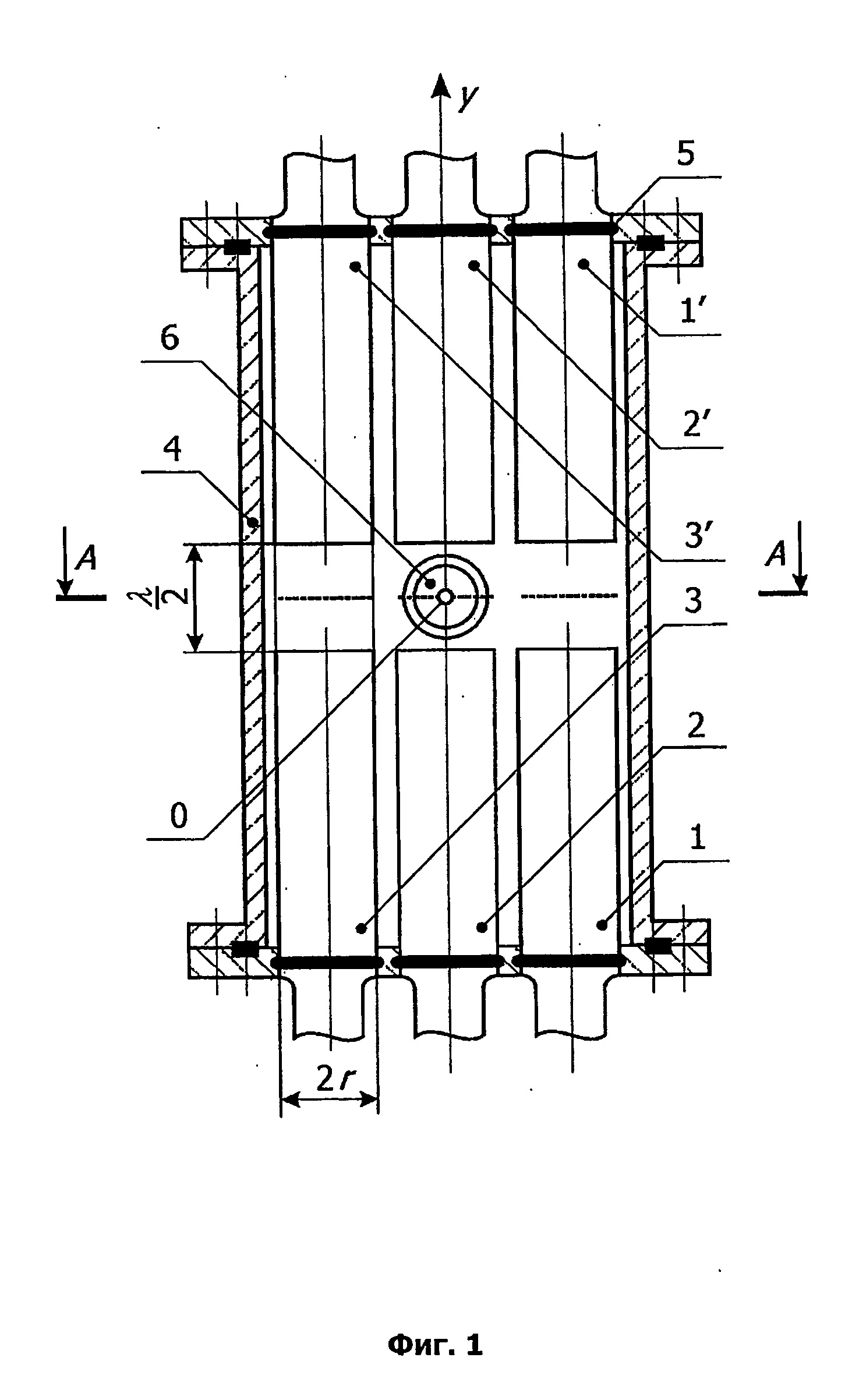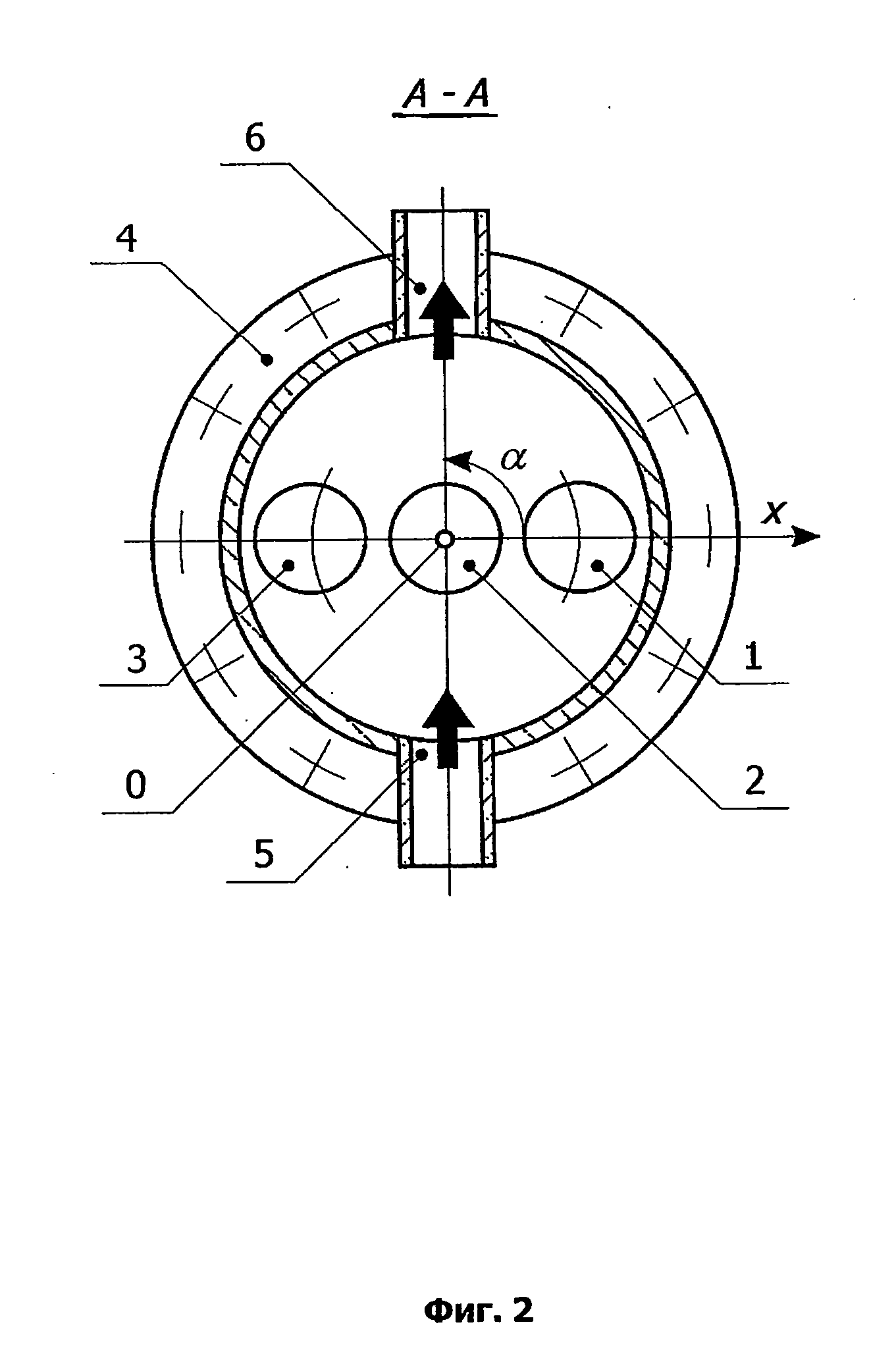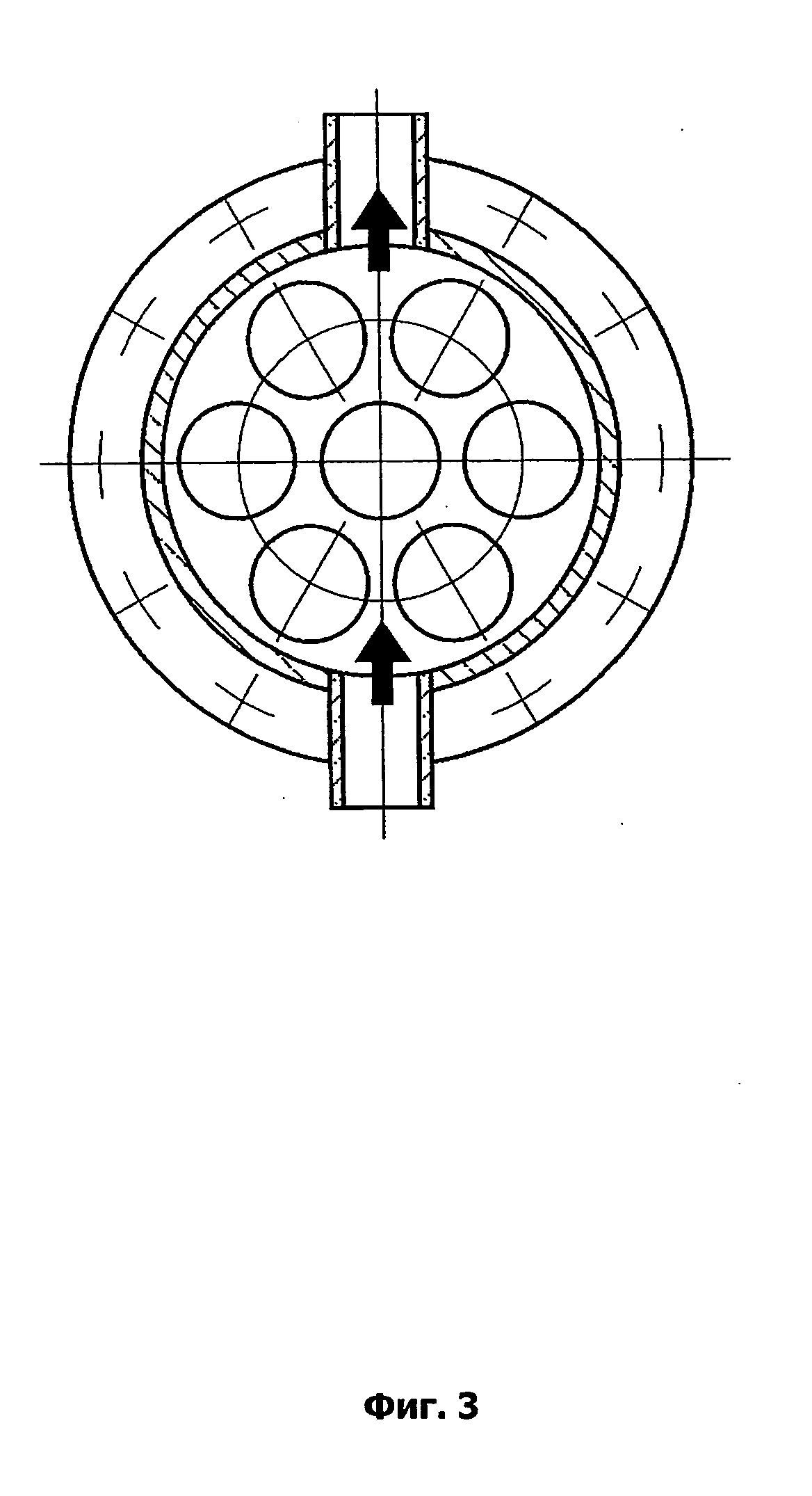Cavitation Reactor
- Summary
- Abstract
- Description
- Claims
- Application Information
AI Technical Summary
Benefits of technology
Problems solved by technology
Method used
Image
Examples
Embodiment Construction
[0019]The claimed cavitation reactor, for instance, the one shown in FIGS. 1 and 2, includes three acoustic resonators, each having a pair of solid-state waveguides 1, 1′; 2, 2′; and 3, 3′, located opposite each other. They are actuated by electroacoustic transducers (not shown on the drawing), by transforming electric energy into mechanical energy of oscillations and transmitting the oscillations to liquid by the waveguides. The distance between waveguide surfaces in the resonators is equal, for instance, as shown in FIG. 1, to half-length of the elastic wave in the processed liquid. The transducer can be connected either to one of the waveguides that constitute or form the resonator, which in this case is called the active wall, or to both waveguides. In the first case, the condition of establishing resonance among the waveguides in liquid is achieved automatically, because the second waveguide, the passive wall, will oscillate at the same frequency as the first one. In the second...
PUM
 Login to View More
Login to View More Abstract
Description
Claims
Application Information
 Login to View More
Login to View More - Generate Ideas
- Intellectual Property
- Life Sciences
- Materials
- Tech Scout
- Unparalleled Data Quality
- Higher Quality Content
- 60% Fewer Hallucinations
Browse by: Latest US Patents, China's latest patents, Technical Efficacy Thesaurus, Application Domain, Technology Topic, Popular Technical Reports.
© 2025 PatSnap. All rights reserved.Legal|Privacy policy|Modern Slavery Act Transparency Statement|Sitemap|About US| Contact US: help@patsnap.com



